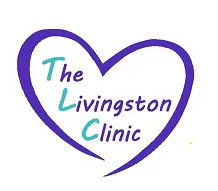Is Spinal Decompression Therapy right for me?
Whether or not you are a candidate for spinal decompression therapy can only be determined by reviewing your health history, treatment history, and test results. Please contact the office to schedule an appointment.
How does Spinal Decompression work?
Spinal Decompression provides a non-invasive treatment modality for the management of pain and disability for patients suffering with incapacitating neck pain, low back pain and sciatica associated with herniated discs, bulging or protruding intervertebral discs, degenerative disc disease, posterior facet syndrome, and radicular pain. It is designed to relieve pressure on the structures causing pain by applying de-compressive forces to compressive and degenerative injuries of the spine using logarithmic distraction tensions applied to the patient according to doctor recommended protocol. In plain talk, it relieves the pain by gently separating the vertebrae above and below the involved disc which causes a vacuum effect. This draws the bulge or herniation back within the disc space and allows fluids, nutrients and oxygen from the surrounding tissues to return to the disc, resulting in disc re-hydration and repair.
What does Spinal Decompression Cost and will Medical Insurance pay for it?
In terms of time and money, Spinal Decompression Therapy is significantly less expensive than surgery. Until the doctor has evaluated you and determined if you are a candidate for this type of therapy, we cannot even begin to know what costs may be.
What does Spinal Decompression Therapy look like?
Once it is determined that Spinal Decompression is an appropriate treatment for your condition, you will be scheduled for a series appointments. Each treatment session begins with a warm-up and a small survey about how you are feeling. The treatment continues with a number of Spinal Decompression cycles which takes usually 15-30 minutes. Treatments may begin with several sessions each week and may decrease in frequency as you progress.
In the beginning of treatment, it may be recommended that you wear a lumbosacral support brace and/or limit your activities. Bending, lifting, twisting, pushing, pulling, (for example, housecleaning) and sitting or standing for extended periods of time should be avoided. If your job involves these types of activities, you should consider taking some time off. Additionally, you will be asked to use a cold pack or ice several times a day and consume adequate amounts of water. Supportive nutritional supplementation may also be recommended.
As you progress, you will be instructed in gentle stretching exercises and walks of short duration will be encouraged. As you continue to improve your exercises will also progress from gentle stretching to core and lumbar stabilization and strengthening exercises.
Related Resources
